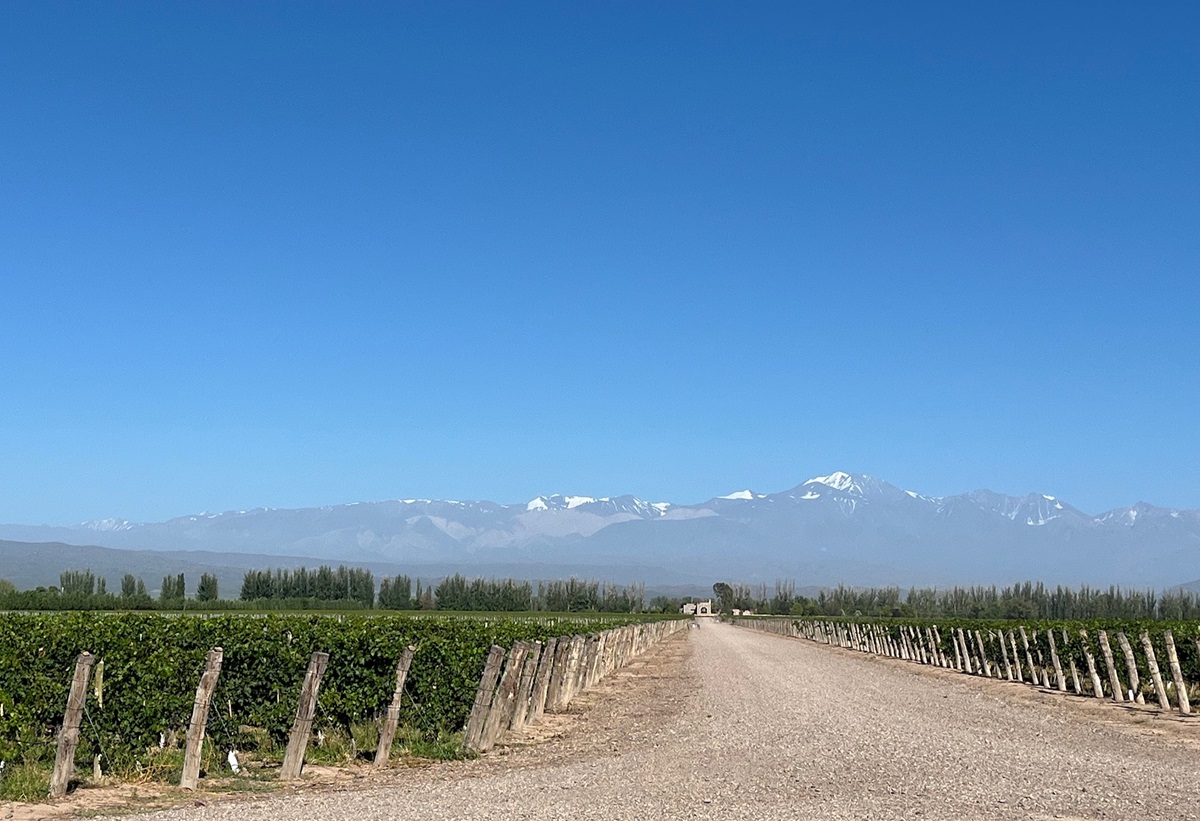PINOTAGE
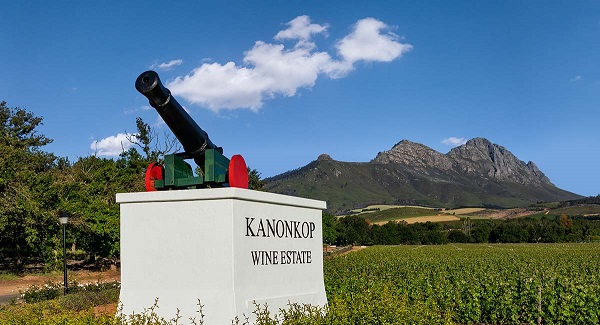
By Rose Murray Brown MW Published in The Scotsman 26 September 2020
“Pinotage is a very misunderstood varietal – and it is now time for the world to give it a chance”, says Abrie Beeslaar, cellarmaster at leading Cape estate Kanonkop.
“I believe 80% of the bad experiences people have had with this grape in the past come from winemakers who do not understand the varietal, and have not managed it properly in vineyard and winery”, he says.
Kanonkop, an old 100 hectare family estate in northern Stellenbosch now in its fourth generation owned by Johann and Paul Krige, was one of the first to plant Pinotage in 1940’s. They have focused on it since 1980’s, even through the grape’s unfashionable days. Today they are the world’s leading exponent of Pinotage, a grape which is only planted in tiny plots elsewhere in the world: California, Brazil, New Zealand and now in England.
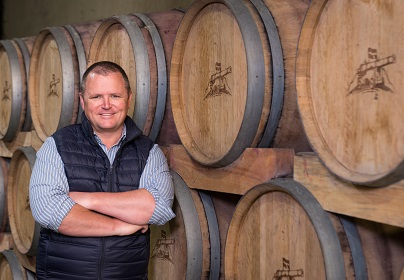 Beeslaar (pictured right) is only the third winemaker to have worked at Kanonkop. He arrived in 2002 from Swartland winery to work with Beyers Truter, who left the following year to set up Beyerskloof. Previously Jan Coetzee (now at his own Vriesenhof) had been in charge – best known for his comment: “Pinotage is not for sissies”.
Beeslaar (pictured right) is only the third winemaker to have worked at Kanonkop. He arrived in 2002 from Swartland winery to work with Beyers Truter, who left the following year to set up Beyerskloof. Previously Jan Coetzee (now at his own Vriesenhof) had been in charge – best known for his comment: “Pinotage is not for sissies”.
Today Coetzee, Truter and Beeslaar still meet regularly – they have more experience of this awkward, much maligned grape than anyone else in the Cape.
“Pinotage was created back in 1925 by Professor Perold in South Africa. I reckon Perold was aware that Pinot Noir was not suited to our conditions, so he crossed it with sturdier higher-yielding Cinsault”, says Beeslaar.
Pinotage is a very sturdy grape, which will be useful when it comes to our warming climate. “It can handle heat and drought better than European varietals – and has thick skins which are better adapted to tough conditions”, he says.
It is very expressive of site, but needs the right site and terroir. At Kanonkop decomposed granite gives a muscular style, while Beeslaar’s own Pinotage from shale soils giving a feminine expression.
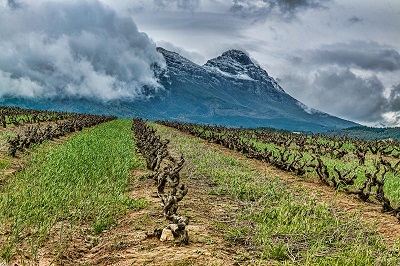 Planted as unirrigated bushvines in 8 different plots in the highest and windiest parts of their vineyard on the foothills of Simonsberg mountains, the fierce ‘black south-easterly wind’ plays a big role in crafting their Pinotage. The grape can handle wind well, giving it a true expression: controlling growth, giving small bunches and better concentration. To protect young plants Beeslaar seeds high-growing rye in between rows, then rolls the rye flat to protect moisture and subdue weeds.
Planted as unirrigated bushvines in 8 different plots in the highest and windiest parts of their vineyard on the foothills of Simonsberg mountains, the fierce ‘black south-easterly wind’ plays a big role in crafting their Pinotage. The grape can handle wind well, giving it a true expression: controlling growth, giving small bunches and better concentration. To protect young plants Beeslaar seeds high-growing rye in between rows, then rolls the rye flat to protect moisture and subdue weeds.
In the winery, the challenge is that Pinotage is ‘super-quick’ at fermenting. “It takes just 3 days, whilst Cabernet Sauvignon takes 5-6 days, so the window for extraction is small”, he says.
His predecessor at Kanonkop, Beyers Truter, introduced manual punch-downs of the cap of skins every two hours; this extractive regime is still done in the same open-top fermenters used in 1940s.
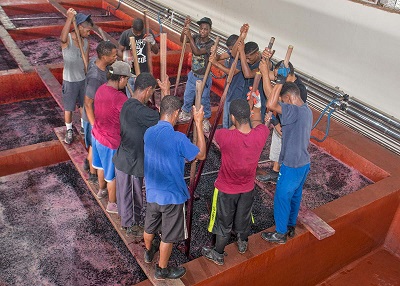 “To get Pinotage right you need to focus on the right extraction for each vintage. All the colour is in the skins, so frequent punch-downs get oxygen in early, extracts colour and mid-palate phenolics. If you leave extraction until later you get aggressive parts, ending up with harsh green wine”, says Beeslaar.
“To get Pinotage right you need to focus on the right extraction for each vintage. All the colour is in the skins, so frequent punch-downs get oxygen in early, extracts colour and mid-palate phenolics. If you leave extraction until later you get aggressive parts, ending up with harsh green wine”, says Beeslaar.
Oak maturation is tricky too. “It is quite a sweet varietal, but with oak you can push it too far. In South Africa our fruitier wines lack structure and tannin layers compared to say Bordeaux, so French oak can help us”. Beeslaar also experiments with part-ageing in American oak for his own label.
In its youth Pinotage displays few characteristics from its Pinot parent, but with age these start to come to the fore. Beeslaar believes that all proper Pinotage should move in that direction: “if it is too light it will fall apart at this stage”.
“Pinotage is a young varietal”, explains Johann Krige owner of Kanonkop. “No-one has the opportunity to taste mature examples, so each vintage we keep back 8,000 bottles and re-release after ten years to show how different it is with age”.
Today you can find a wide variety of Cape Pinotages – from simple fruity early-drinking to serious structured well-oaked styles. Other good producers are Kaapzicht and Beyerskloof in Stellenbosch, Cape Chamonix in Franschhoek or David & Nadia in Swartland – but for the most classic traditional serious expressions of the grape, Kanonkop and Beeslaar clearly lead the field. For the ultimate Pinotage expression, Kanonkop’s single vineyard Black Label is £140 bt (not tasted).
KADETTE CAPE BLEND 2018 (14%) ***STAR VALUE***
£11 Tesco; £13 www.frontierfinewines.co.uk; www.greatgrog.co.uk
Superb example of how Pinotage (37%) plays an important role in a blend, making Cabernet Sauvignon (33%) more accessible at an early age and helping to soften a blend. Sweet brambly fruits, plush succulent fruits, subtle oak and silky tannins. Outstanding wine for the price.
KANONKOP PINOTAGE 2017 (14%)
£28 www.frontierfinewines.co.uk; www.greatgrog.co.uk; www.waitrosecellar.com
An exceptional vintage with lovely finesse, from a hot dry vintage, with cool nights retaining acid. Great future promise; currently dense black cherry fruits, quite muscular, fresh, savoury, smoky graphic notes with tannic tension.
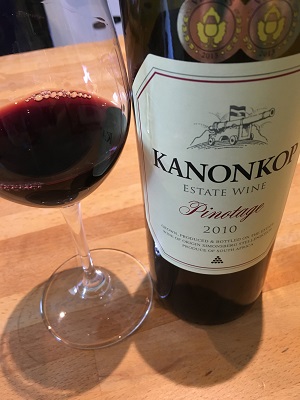 KANONKOP PINOTAGE 2010 (14.5%) ***STAR BUY***
KANONKOP PINOTAGE 2010 (14.5%) ***STAR BUY***
£36-£39 www.frontierfinewines.co.uk; www.greatgrog.co.uk; www.waitrosecellar.com
“Winds were so strong in 2010, we lost 40% of the crop”, says Beeslaar. What survived was so good – and still surprisingly fruity considering its age. Forest floor and earthy notes, smoky bonfires, minerally core with velvet smooth palate – hints at parent Pinot Noir’s softness.
BEESLAAR PINOTAGE 2018 (14.5%)
£55 www.redsquirrelwine.com
Beeslaar’s own Pinotage from a small 2.5 hectare plot of shale soils, matured in both French and American oak – shows beautifully fine perfumed floral character, deep red cherry pure fruits and fine grained tannins. Only 800 cases made annually.
Join Rose’s Meet the Winemaker Series in association with Raeburn Fine Wines : Fri 30 Oct & Sat 7 Nov www.rosemurraybrown.com
wine tastings
The perfect gift for the wine enthusiast in the family. Rose does In-person tastings too.
cellar advice
Rose does cellar valuations for private clients, valuations for insurers & bespoke portfolio management.
Related stories
March 31, 2024
By Rose Murray Brown MW Published in The Scotsman 30 March 2024 On 2 February 1659, the first wine made from grapes grown in South Africa was crafted by the Governor of the Cape, Jan van Riebeeck. He had planted vines four years earlier in the Company’s Garden near Cape Town from cuttings imported from France. Van Riebeeck’s first
March 24, 2024
By Rose Murray Brown MW Published in The Scotsman 16 March 2024 Heatwaves and bushfires were very much on the agenda when I visited Chile last month as winemakers prepared for their 2024 harvest in blistering heat and drought, with a plume of smoke from the devastating fires lingering over coastal hills. Heat and drought are the greatest challenges
March 23, 2024
By Rose Murray Brown MW Published in The Scotsman 9 March 2024 I have two glasses of Malbec in my hands from the same high-altitude vineyard in Uco valley in Argentina. I am in the Catena Institute of Wine in Mendoza with winemaker Agustin Silva. He has asked me to taste the two wines, both from the 1500m high



